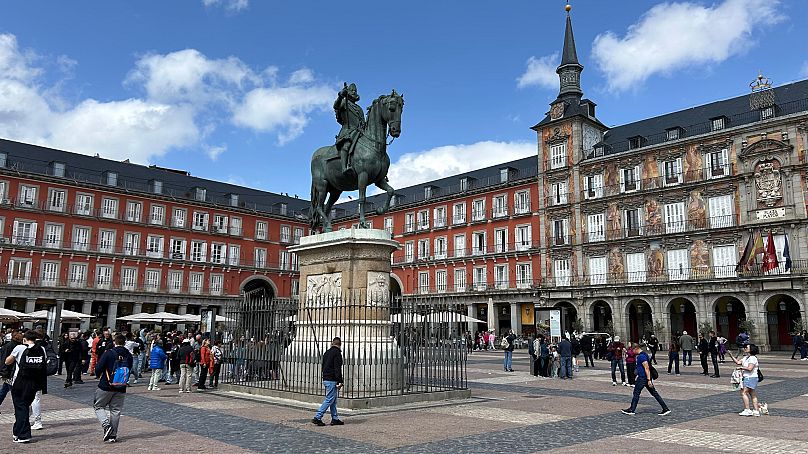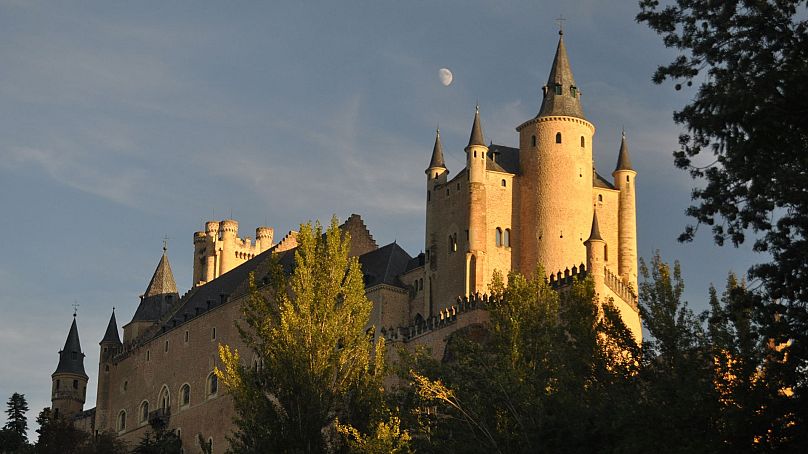Game of Thrones, La Casa de Papel, Elite, Black Mirror, and Almodóvar’s movies, the list of major international productions shot, in total or partially, in Spain has continued to grow in recent years.
It has also led to the development of cinema and television tourism in the country as people travel to see the locations where their favourite films and shows were shot.
“Before it was more like people who were superfans of a movie, so they were travelling mostly south of Spain in the desert where westerns were filmed or in Seville in the footsteps of Star Wars, but now it’s becoming more and more popular,” explains Diego Santos, professor of tourism at EAE Business School of Madrid.
“There has been a bigger trend in the past years around movie tourism. This niche is growing very fast.”
The initial study of this type conducted in Spain, Cinematic Trends in Spain Through Tourism confirms this pattern. Among the participants, 40% acknowledged that cultural experiences are significant motivators for travel. Additionally, 10% shared that they have organized trips specifically to locations featured in movies or television shows.
The potential for this kind of tourism is enormous as large streaming platforms such as Netflix gain popularity and succeed in sparking interest among millions of viewers regarding global landscapes and cultures," explains Ana Alonso, who founded and directs The Travelling Set, Spain’s premier consultancy focused on movie-inspired travel.
The research revealed that Madrid topped the list as the city most often cited when discussing films, TV shows, or documentaries visited (accounting for 28.1 percent of mentions). This was followed by Almería with 22.6 percent and Seville with 15.3 percent.
The task at hand is to create a professional offering, market it effectively, and generate demand. Compared to the UK , which is a leader in this sector, there are still few proposals of this kind in Spain. It's a bit like at the beginning of wine tourism,” Alonso adds.
Film tourism is a rapidly developing niche
Growing demand has led to the creation of an industry specifically linked to film tourism. Companies are starting to work with tour operators to attract travellers interested in tourism based on cinema and TV series.
“It's not just about going to places or visiting the main locations where movies were recorded, but more about linking cinema to the city's history,” explains Aubry Minotti, founder of Lorens, a consulting firm which works through the tour operator channel and travel agencies. “These are more tourist experiences where the film illustrates, extends, and completes a tourist discourse and ultimately redraws the outline of a tourist product through cinema.”
The experiences on offer are diverse and can include night screenings, themed dinners at restaurants, sewing workshops, viewing film costumes or doing a film-themed teambuilding experience.
“Through screen tourism, you can talk about culture, gastronomy, natural heritage, cinema, or fiction that leads you to a place for a reason related to the stories you've seen at home,” says Alonso, who has already developed guides for cinematographic routes through the locations chosen by big productions. “The possibilities are huge.”
Spain is already a popular filming location
Spain has always been a popular place for filming , owing to its climate – which features brief, temperate winters, minimal precipitation, and over 3,000 hours of sunlight annually in certain areas – along with the variety of its terrain, ranging from barren deserts to dense forests or coastal stretches bordering the Mediterranean Sea.
During the 1960s, Almería gained prominence when Italian filmmaker Sergio Leone chose the Tabernas desert as the backdrop for his iconic Spaghetti Western movies, including "The Good, the Bad, and the Ugly."
Spain has been leveraging films to boost tourism for many years," states Santos. "Nevertheless, recognizing that our current tourism approach may lack social sustainability, each additional segment that aids in shifting focus away from areas overwhelmed by over-tourism towards lesser-known locations is crucial.
Starting from 2020, the Spanish government has provided tax credits amounting to 30 percent for up to the first million euros. exhausted and 25 percent for the remainder to lure international film productions . Filming permits have become more accessible, and the visa application process for international production teams has been streamlined. As a result of these changes, these productions are now generating additional revenue. economic impact of €1.32 billion , according to the Spain Film Commission.
And, as a sign that Spain is emerging as a top destination for this growing trend, the first European congress on film tourism will be held next month in the country.
Could this be a solution to mass tourism?
At the same time, protests against mass tourism have been underway in Spain since last year. Locals have complained about the negative impact on their lives, starting with a severe housing crisis accentuated by short-term rentals.
Last summer, tourists were even sprayed with water guns in Barcelona . Could this new type of tourism provide a solution?
Screen tourism represents for us an innovative approach, one that aligns with sustainable practices," explains Alonso. "Unlike activities such as beach swimming which are seasonal, this form of travel can be pursued anytime. Additionally, it enables us to attract visitors to destinations they might not have considered otherwise.
This vision is also held by Lorens, who provides excursions to multiple destinations throughout Spain.
"Of course, these clients aim to visit the primary landmarks; however, once we lead them to a less prominent site that was featured in movies, they consistently express amazed reactions," stated Minotti.

